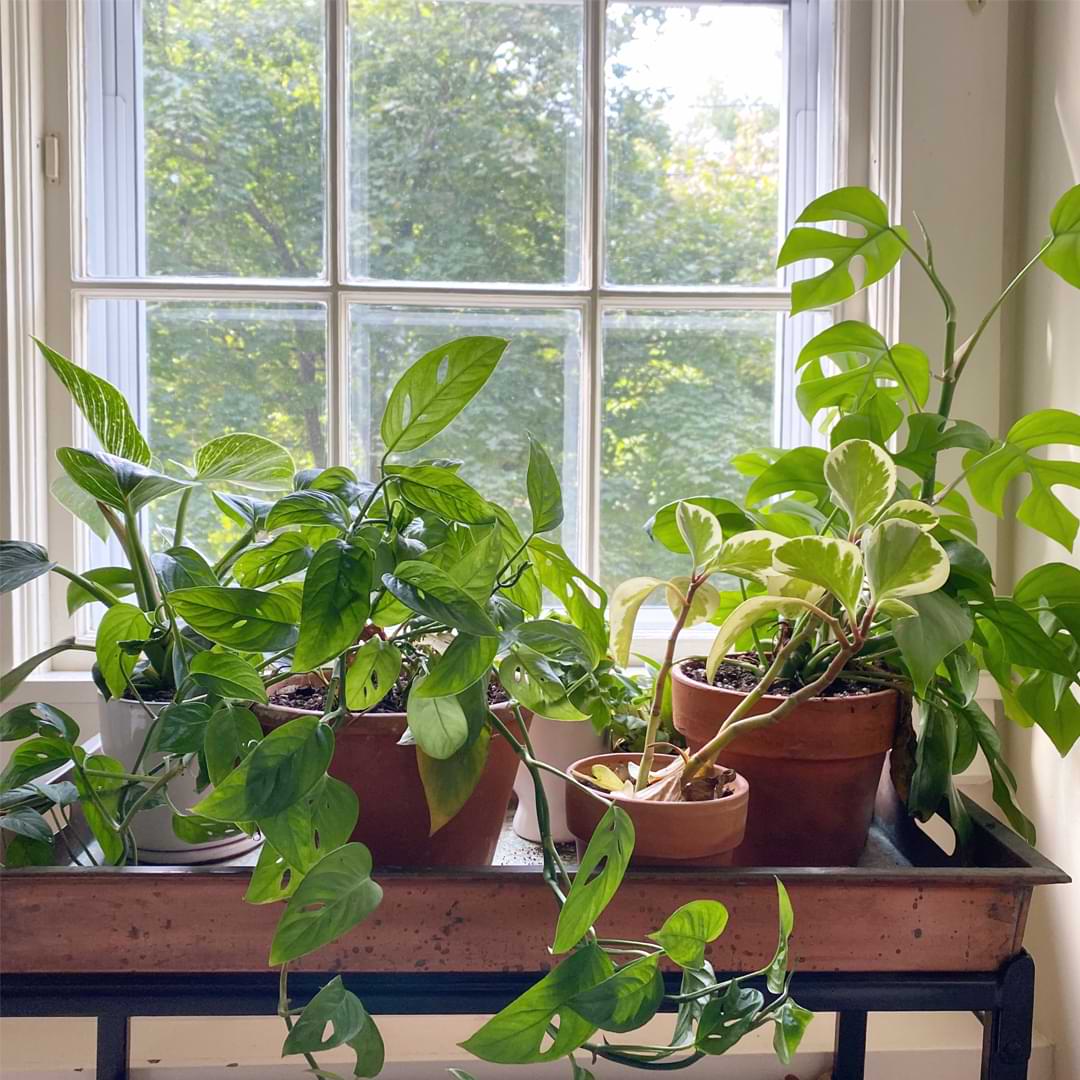Pothos plants grow quickly, so it’s important to repot them regularly to allow their roots more space to grow! Repotting can also be an important way to treat pothos health problems. So we thought we’d give you a rundown of how and when to repot your pothos plant for maximum health and growth.
Table of Contents
Why Repotting Is Necessary | How and When to Repot Your Pothos
There are generally two reasons why repotting a plant might be necessary: for growth, and to treat health problems.
And, of course, sometimes you fall in love with a beautiful new planter than you simply MUST have. So, three reasons.
But let’s focus on the first two.
Repotting for Growth
Rapidly growing plants like pothos need to be repotted every year or so to allow the roots more room to grow and stay healthy. Without repotting, the plant can become root-wrapped, which means the roots will grow around the inside of the pot and become increasingly more tangled and compacted because they have no room to branch out!
This is dangerous because not only can it stunt the growth of your plant, but it can prevent your plant from absorbing water and nutrients properly. Not good!
Over time, the soil in the pot can also become compacted, which can prevent the roots from growing and absorbing water and nutrients. Compacted soil doesn’t drain well, so it can also hold onto water for too long once it does absorb. This leads to issues caused by both dryness and root rot.
For pothos plants and other rapidly growing aroids, plan on repotting every year or so to give your roots more wiggle room! If it’s been a while since you last repotted, if you see roots popping out the top or bottom of the pot, or if you see the soil pulling away from the edges of the pot, it’s time to upgrade to a slightly larger pot! (2-3 inches larger than the root ball of your pothos plant is best.)
To Treat Health Problems
Sometimes you overwater your pothos plant or the soil becomes compacted and won’t drain properly. This means your plant can develop root rot, a condition that begins in the roots but can work its way upward to cause discoloration on the leaves and eventually kill the whole plant.
If the root rot is mild, you can scale back on watering and use a Root Supplement to help heal the roots. But if the condition is severe and/or caused by compacted soil, repotting is the best method of action. That way, you can rinse the roots and remove any rotted portions, and get your plant into fresh, clean, well-draining soil.
If you notice the stems of your pothos plant turning dark brown or black and getting mushy, your plant probably has root rot (especially if the soil feels wet for long periods). You might also notice soft dark-brown or black spots on the leaves.
That’s a sign that it’s time to repot your pothos!

How and When to Repot Your Pothos Plant
Repotting a pothos plant is simple!
Step 1: Remove the plant from its pot.
To do this, tip the pot on its side or even flip it upside down and gently work the plant out. Use a rubber spatula to work around the edges if necessary. Just make sure you aren’t yanking the plant out, or you could break some stems!
Step 2: Plant your pothos in its new pot.
Place an inch or two of potting mix in the bottom of a clean pot. If you’re repotting to give your pothos room to grow, this pot should be a few inches larger than the root ball of your plant. If you’re repotting due to root rot, this can be the old pot after it’s been washed or a new pot that’s the same size.
Place your pothos plant upright in the new pot and add potting mix around the sides to fill in the gaps. Make sure to leave about 2 inches of space on top.
Step 3: Water generously.
Add water to the soil until it starts to run out the bottom. The soil will probably settle, so add a little more to the top to compensate.
That’s it! Now you know how and when to repot your pothos! Your plant’s roots will be a little sensitive, so wait a month or so before you resume fertilizing your pothos with Pothos Plant Food or any other liquid or pellet fertilizer.
Now your pothos will have room to grow lots of new, beautiful leaves and trailing vines.
In love with pothos plants? So are we! Learn more in our pothos care guides.
Pothos: The Perfect Beginner Houseplant
The Ultimate Guide to Pothos Varieties




